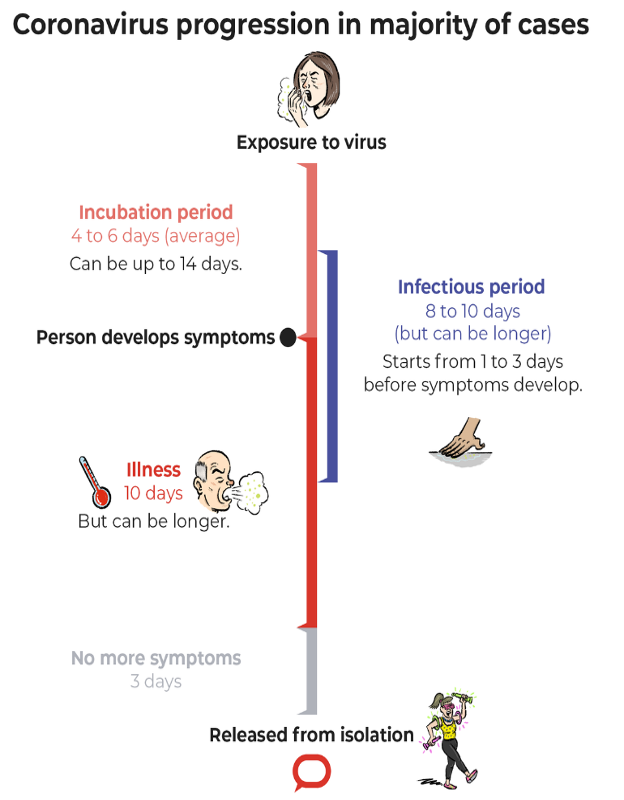When people are infected with the SARS-CoV-2, it usually takes 4-6 days before they begin to show symptoms, although they may appear as soon as 2 days after infection or as long as 14 days later. The disease usually begins with a fever, fatigue and a dry cough, but SARS-CoV-2 has been shown to cause many different symptoms. The common symptoms of COVID-19 include:

- Fever (Particularly if above 38°C/100.4°F) or chills
- Cough
- Shortness of breath or difficulty breathing
- Fatigue
- Muscle or body ache
- Shortness of breath or difficulty breathing
- Fatigue
- Muscle or body aches
- Headache
- Loss of sense of taste or smell
- Sore throat
- Nausea or Vomiting
- Diarrhea
COVID-19 can involve many other symptoms. For a complete list, go to the Centers for Disease Control and Prevention’s (CDC) website Some people, referred to as asymptomatic cases, experience no symptoms despite being infected.
Most cases of COVID-19 resolve on their own, following a course similar to that of the flu. However, in a small subset of the population, the disease will become severe and require hospitalization. About 20% of hospitalized patients require intensive care and a respirator to help them breathe. About 2% of people infected will die from COVID-19.
The severity of the disease depends heavily on the characteristics of the person infected. Age is the single most important risk factor. The risk of severe disease rises dramatically above the age of 60, while young children rarely require hospitalization. Other important risk factors include pre-existing heart or lung disease, high blood pressure, weakened immune systems, severe obesity, and diabetes. If you have any underlying chronic disease, consult your physician or refer to the CDC to determine if it puts you in the high-risk category.